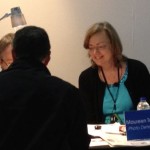You don’t have to be Royal Groupie to be captivated by recent headlines about Richard III. It isn’t every King whose burial place is lost and then found, and whose remains are identified by scientific and historical analysis and confirmed by DNA.
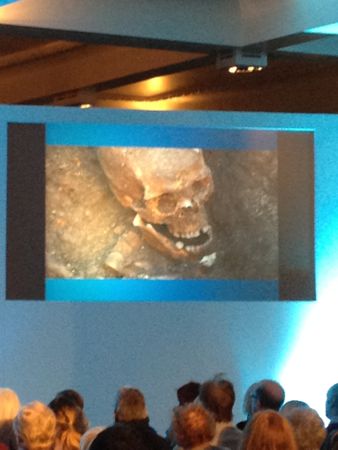
When I heard the news about “the king in the carpark” in late January, and learned that Dr. Turi King would be presenting at Who Do You Think You Are LIVE, the biggest family history event in the world, I hoped I could get a ticket to the presentation. Luckily, although tickets were sold out early, I was able to find a place at the back of the room and catch the entire talk.
Dr. Turi King, University of Leicester geneticist, led the audience through the project beginning with the initial search for the location of the Greyfriars’ church, believed to have been the final resting place of the defeated King Richard after the Battle of Bosworth Field in 1485
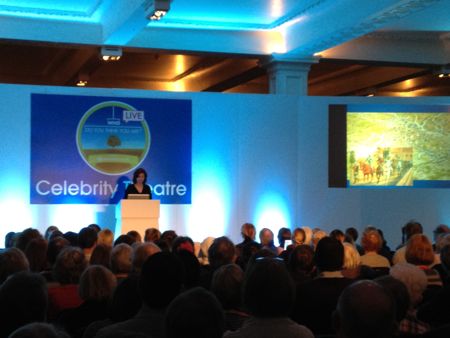
It was interesting to learn that the site location and excavation occurred in tandem with the genealogical work of identifying and collecting DNA samples to be used for identification. Without the DNA, identification would not have been nearly as conclusive. The descendant DNA confirmed the family tree research, and provided additional evidence for Richard III’s positive identification.
Dr. King showed photos of the excavation area, and the trenches used to locate the church and likely burial spot. When the skeleton was found and examined, first impressions showed the acute scoliosis and skull injuries that were expected on Richard’s remains.
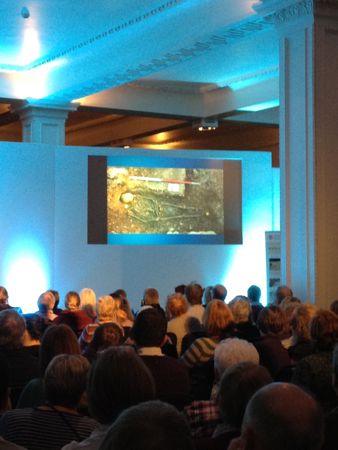
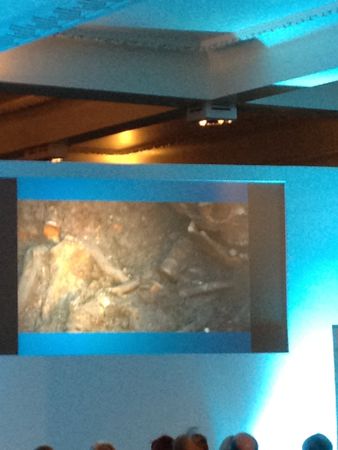
Historical accounts of the battle gave evidence of the kinds of injuries suffered by Richard; these were evident in the remains. Dr. King pointed out injuries on the skull that would be consistent with someone who has lost their helmet in battle. She also pointed out several “humiliation injuries” that were typical for the time: slashes to the face, sword through the buttock, slice through the skull.
She also described the careful conditions used to unearth the remains to keep the DNA free from contamination. After being removed from the site, teeth were extracted from the skull for the DNA sample. Dr. King amused the audience by describing the jittery trip to a French lab carrying the teeth through Customs, and then returning with a baggie filled with white powder.
Following the formal presentation, Dr. King spent considerable time answering questions, and explained that under the terms of the excavation agreement, King Richard’s remains will be buried at Leicester Cathedral, “the nearest consecrated ground” to the previous burial site. The exact date for reinterment has not been set, but it will take place within a pre-determined time limit. Living descendants of Richard III have petitioned to have him returned to his York homeland, but current plans call for reinterment in Leicester.
Read more about WDYTYALive —
Meeting the Metropolitan Police at Who Do You Think You Are LIVE
WDYTYA Report 1: This Genealogy Event is BIG!
